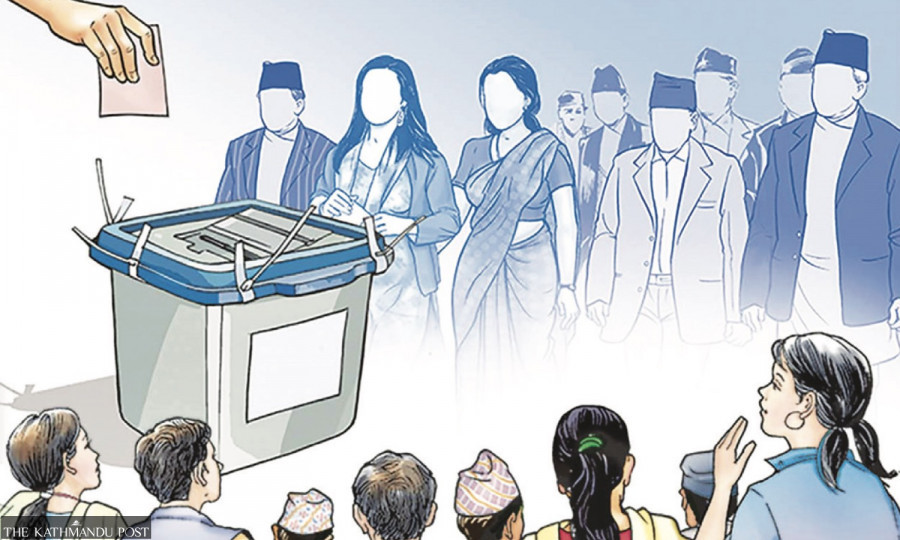Editorial
Voting rights for all
Persons with disabilities in Nepal continue to be excluded from the electoral process.
The idea of accessible elections is not a novel idea anymore. The United Nations Disability Convention states that persons with disabilities include those who have long-term physical, mental, intellectual or sensory impairments which in interaction with various barriers may hinder their full and effective participation in society on an equal basis with others. The Constitution of Nepal guarantees that persons with disabilities shall have the right to participate in state bodies on the basis of the principles of inclusion. The Act Relating to Rights of Persons with Disabilities 2017 mandates that “no person with disability shall be subjected to discrimination on the basis of disability or be deprived of personal liberty”, and that "persons with disabilities shall have the right to enjoy the rights granted under the prevailing law on an equal basis with others, in addition to the rights granted by this Act”.
Despite these constitutional and legislative provisions, persons with disabilities in Nepal continue to be excluded from the voting process as the country fails to translate its commitments into action. While local governments and the Election Commission continue to pass the buck to each other when it comes to building accessible infrastructure, persons with disabilities continue to face the structural barriers that impede their access to the polling booths as well as the voting process. A fundamental right like voting cannot be constrained for lack of amenities that the institutions mandated to conduct free and fair elections fail to install in time. The institutions are constitutionally and legally bound to ensure that the amenities are in place; failing to do so lays bare their lack of commitment to ensure social justice and uphold the people’s fundamental rights to democratic participation.
However, as the Post reported on Tuesday, persons with disabilities face various impediments to their voting rights, like lack of secrecy, ballot papers with tactile relief and accessible infrastructure. Persons with disabilities who voted in the 2017 local elections say the structural barriers they faced once they were in the polling booth were plenty. Lack of tactile relief prohibited them from voting on their own, and they had to take the help of others while voting. Lack of ramps leading to the polling stations made their travel and voting experience less than enjoyable. The tables kept at the polling stations were too high for them to use them. Lack of sign language interpreters made it difficult for mute voters to communicate. Persons with cognitive disabilities had difficulty identifying the electoral symbols they wanted to vote for. As a result, the secrecy of the voters was compromised.
The Election Commission and local governments should come together to build the infrastructure necessary for ensuring the participation of persons with disabilities in the electoral process. It should begin with the commission and local governments working towards enhancing literacy about disability rights and the idea of an inclusive electoral process. Ensuring voting rights for all is not enough; building or enhancing infrastructure to translate the constitutional and legal provisions into action in the field to ensure the dignified participation of the targeted groups is a must.




 8.12°C Kathmandu
8.12°C Kathmandu














